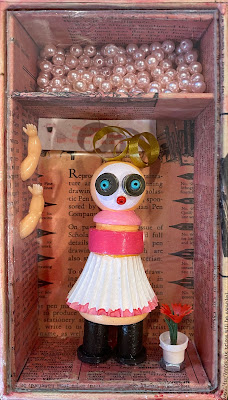I’ve mentioned my love for the painting
Watson and the Shark by American painter John Singleton Copley several times. The romantic beauty of the pastel clouded sky paired with the sea foam green waves, creates a serene, dreamy feeling that contrasts with the heroic action at the center. There’s a lot to look at.
And then there’s the story behind the painting.
First, a little background: John Singleton Copley grew up on a Boston wharf in the mid-1700s. In his late teens, he became a popular portrait painter for wealthy American colonists, even painting the likes of Paul Revere and Samuel Adams. The political situation in Boston was growing increasingly turbulent, and Copley’s family connections were all Loyalists, so in 1774 he set sail for London. After embarking on a nine-month Grand Tour of Europe, he began his painting career again. In addition to portraits, Copley tried his hand at historical painting. His first foray into this genre was Watson and the Shark.

The subject of the painting, Brook Watson, was orphaned at six and sent to live with relatives on a Boston wharf, right next to the wharf where Copley’s family lived — they probably crossed paths. At age 14, he began working on a ship and sailed to Cuba. While swimming in Havana harbor one day, he was attacked by tiger sharks. It took three attempts to rescue him and he lost his leg in the attack.
Twenty-five years later, now a successful London merchant, Watson asked Copley to paint the scene. He apparently commissioned the painting as a lesson to others about overcoming adversity. He went on to become chairman of Lloyd’s of London, a Member of Parliament, and Lord Mayor of London. (Not everyone admired his ambition; one writer noted, “there are those whose sympathy is with the shark.”)
Copley had never visited Cuba, so he probably got details of Havana harbor from prints and book illustrations. It’s obvious that he had never seen a shark: he painted the animal with lips and eyes that resemble a tiger’s more than a shark’s. Gory details of Watson’s injury are hidden beneath the waves, though a hint of blood is visible in the water. Many aspects of the painting appear to be influenced by what Copley saw on his Grand Tour a few years earlier.
 One of the many interesting details of the painting is the Black sailor who watches over the violent scene. Copley’s first sketches were of a white man with long, flowing hair, but instead he used this character for the final painting. The same man, whose identity is unknown, appeared elsewhere in a standalone portrait by Copley. The painter seems to be making a connection between Watson, the very white, very vulnerable blond swimmer, and the Black man who is holding the rope that will save him.
One of the many interesting details of the painting is the Black sailor who watches over the violent scene. Copley’s first sketches were of a white man with long, flowing hair, but instead he used this character for the final painting. The same man, whose identity is unknown, appeared elsewhere in a standalone portrait by Copley. The painter seems to be making a connection between Watson, the very white, very vulnerable blond swimmer, and the Black man who is holding the rope that will save him.
The painting was exhibited at the Royal Academy in 1778, causing quite a sensation. It’s currently at the National Gallery of Art in Washington, D.C.
With Watson and the Shark, Copley created a dynamic and dramatic composition, and skillfully captured the varying human emotions. I can feel the fear, despair, and panic of the men on the boat, along with the strength and fierce determination of the young man standing at the front of the boat trying to fend off the shark. I never tire of looking at it.
Watson and the Shark was a blockbuster in its day, just like the movie Jaws was a few decades ago. Get a 'movie poster' featuring Brook Watson's shark attack here.




.jpg)
.jpg)

















